Number Patterns Teaching Resources
Explore number patterns in your math classes this school year with fun worksheets, number sequence games and more teacher resources created to help your students understand how numbers in a sequence relate to one another.
Aligned with both TEKS and Common Core math standards, the printable and digital activities in this collection were created by the math teachers on the Teach Starter team to help you save time on your lesson plans.
Whether this is your first year teaching about number patterns or you're just looking for a little extra help, we've got you covered. Read on for a primer from our teacher team! We explain what number patterns are so you can share with your class, plus we explore three common patterns.
What Are Number Patterns? A Kid-Friendly Definition
A number pattern is a series of numbers that each follow the same rule. These patterns or sequences can help us find missing numbers or identify what number will come next in a series.
For example, let's say you are given the following list of numbers:
- 4, 8, 12, 16, 20, 24
This is an example of a number pattern in which the next number in the series is 4 more than the previous number. Once you can identify the pattern in a series of numbers like this one, you can then use that pattern to determine what number comes next or even what numbers could have come before the list began.
This is one of the many reasons number patterns are an important part of building students' algebraic reasoning skills. They help students understand how numbers can be related to one another and apply what they know about those relationships to solve problems.

3 Common Types of Number Patterns
We can't talk about number patterns without breaking down the different types your students are going to encounter in their math journey!
Linear Patterns
Linear patterns are number patterns in which the numbers increase or decrease by the same amount each time.
The example used above — in which each number in the series increased by a quantity of 4 — is a simple example of a linear pattern.
Geometric Number Patterns
Another type of pattern students may have to contend with is the geometric number pattern. This type involves numbers that are multiplied or divided by a constant factor.
The multiplication table is an example of a geometric number pattern.
Recursive Patterns
Students will have to make full use of their understanding of the four whole number operations to work with recursive patterns. That's because this pattern involves finding each successive number in the sequence by performing a specific operation on the previous number(s).
- Free Plan
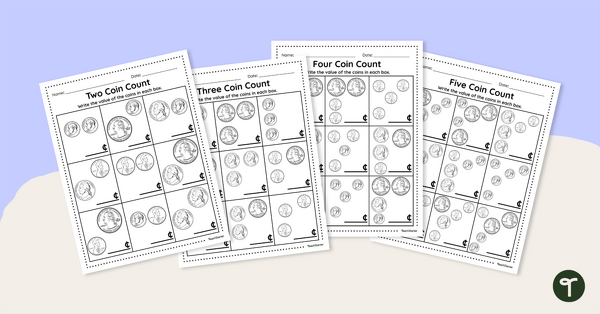
Counting Mixed Coins Differentiated Worksheets
Download differentiated printable worksheets and use skip counting and addition skills to determine the value of each coin collection.
- Free Plan
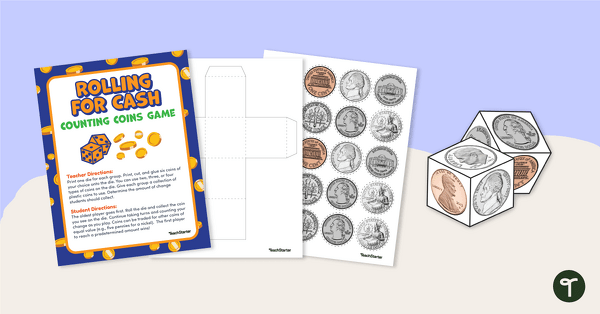
Rolling for Cash — Printable Counting Coins Game
Print a customizable money game for kids that requires addition and skip counting skills to count coins.
- Free Plan
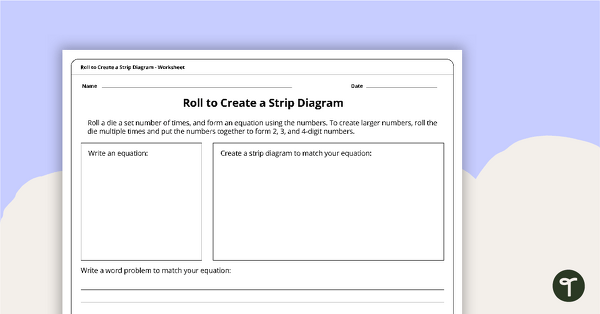
Roll to Create a Strip Diagram
A roll to create template for students to use when learning to use strip diagrams.
- Plus Plan
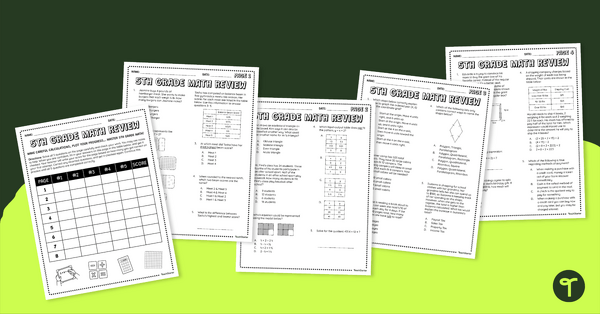
5th Grade Math Review – Test Prep Packet
Encourage your students to work through 8 pages of 5th-grade math problems while charting their progress to measure their success.
- Free Plan
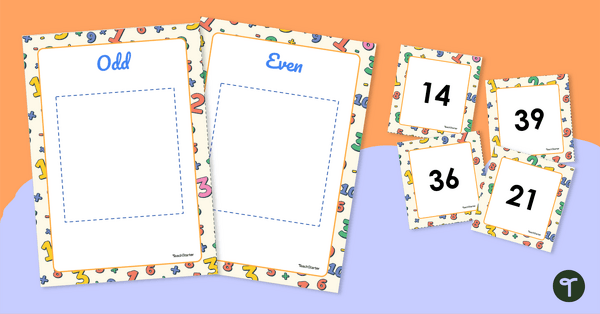
Odd and Even Numbers Sorting Activity
Identify and sort 2- and 3-digit numbers into odd and even categories.
- Plus Plan
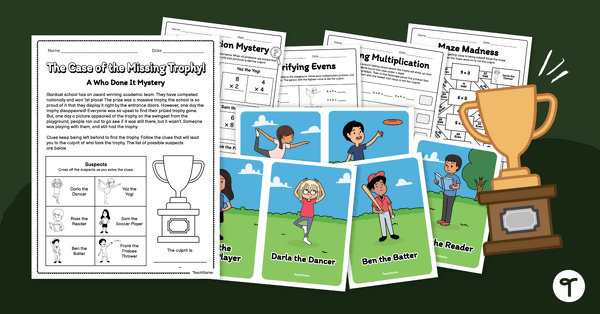
3rd Grade Odd and Even Properties (The Case of the Missing Trophy Mystery)
Explore odd and even properties in multiplication sums with this fun and engaging mystery project.
- Plus Plan

Emoji Equation Riddles - Determine the Unknown
Build problem-solving and critical thinking skills with printable Emoji Math Riddle task cards.
- Free Plan
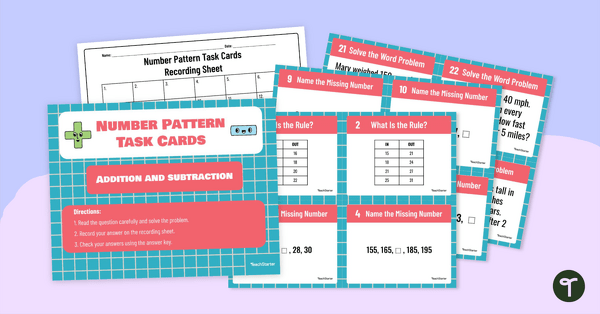
Number Pattern Task Cards – Addition and Subtraction
Practice identifying the rules of patterns, determining missing numbers, and interpreting word problems with this set of 36 task cards.
- Plus Plan
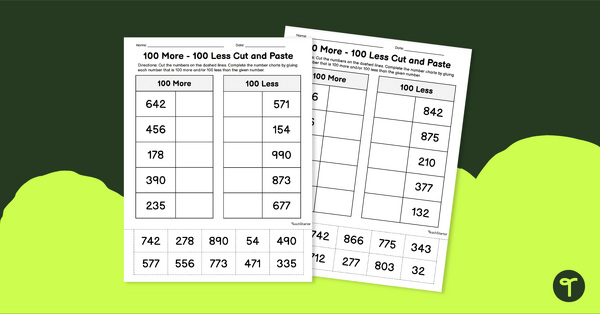
100 More and Less Worksheets - Cut and Paste
Use an understanding of place value to determine a number 100 more or less than a number with a pair of cut-and-paste math worksheets.
- Free Plan
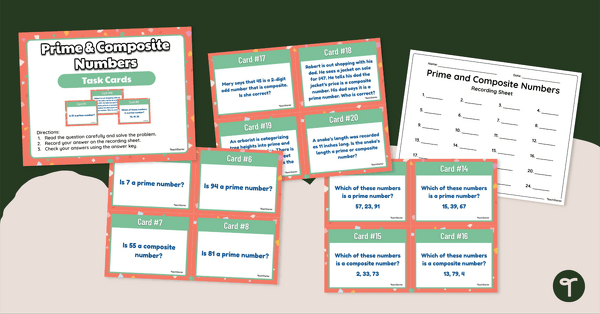
Prime & Composite Numbers – Task Cards
Demonstrate an understanding of prime and composite numbers with this set of 24 task cards.
- Free Plan
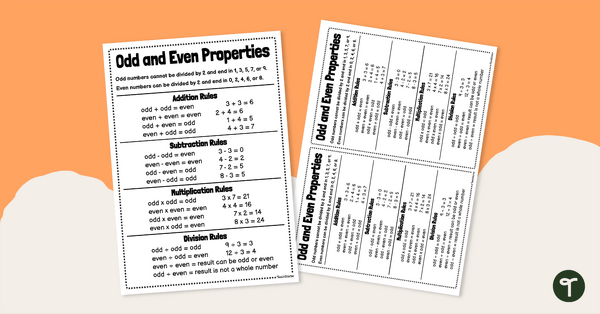
Odd and Even Properties Student Cheat Sheet
Help students remember the properties of odd and even numbers with this student cheat sheet.
- Free Plan
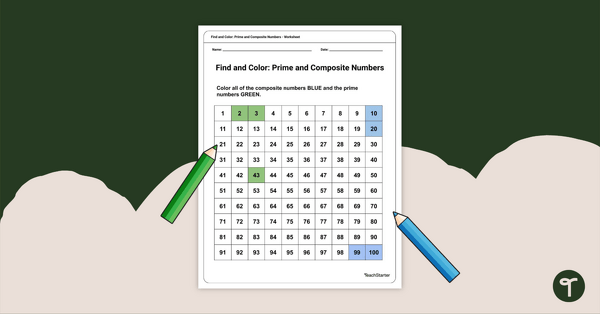
Find and Color: Prime and Composite Numbers Worksheet
Encourage your students to identify prime and composite numbers up to 100 with this free find and color worksheet.
- Plus Plan
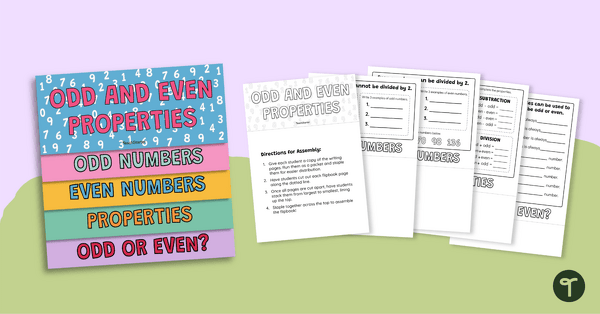
Odd and Even Properties Flipbook
Teach your students about the properties of odd and even numbers with this engaging flipbook.
- Plus Plan
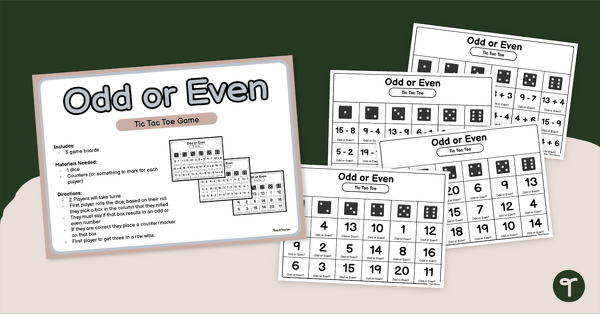
2nd Grade Odd or Even Tic-Tac-Toe Game
Practice identifying odd and even in simple numbers and sums with this fun Tic-Tac-Toe game
- Free Plan

2nd Grade 'I Spy' Odd and Even Number Worksheet
Practice determining odd and even numbers of objects with this fun scavenger hunt worksheet.
- Plus Plan
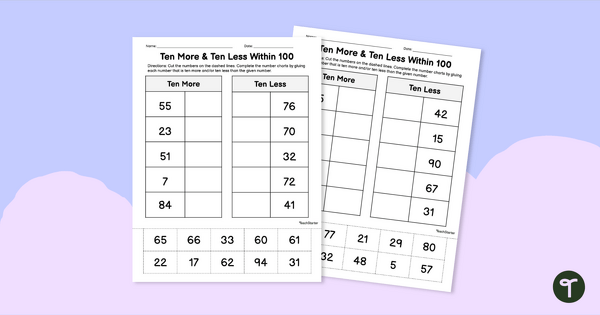
Ten More, Ten Less Within 100 - Cut and Paste Worksheet
Practice adding and subtracting 10 from given numbers within 100 in this cut-and-paste worksheet.
- Plus Plan
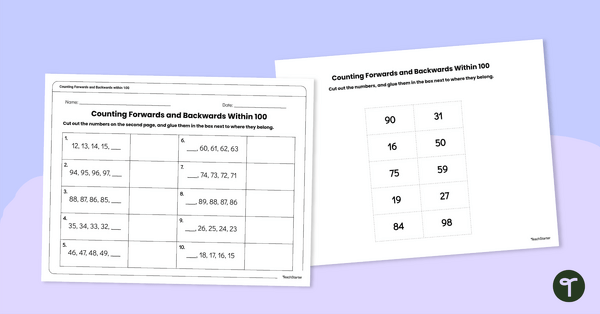
Counting Forwards and Backwards Within 100 - Cut and Paste Worksheet
Practicing counting forwards and backward from a given number within 100 with this cut and paste worksheet.
- Plus Plan

Graphing Numerical Equations – Google Slides Interactive Activity
Recognize and analyze patterns in graphs, input-output tables, and equations with this interactive activity.
- Free Plan
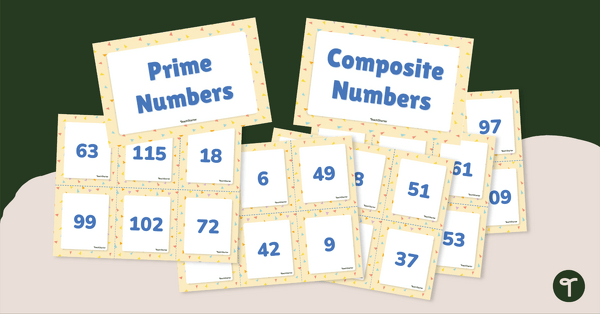
Prime and Composite Number Sort
Identify prime and composite numbers by sorting 30 number cards into their proper category.
- Plus Plan
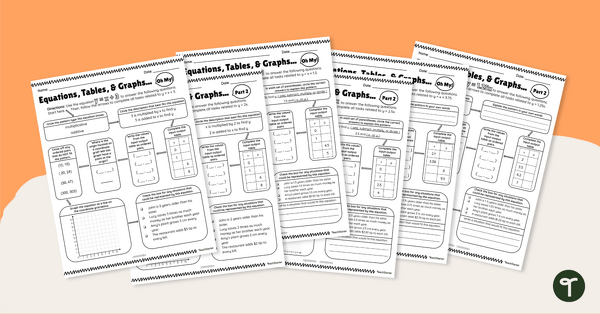
Equations, Tables, and Graphs, Oh My! – Differentiated Worksheets
Use these differentiated worksheets to practice using equations to create patterns within input-output tables and graphs.
- Free Plan
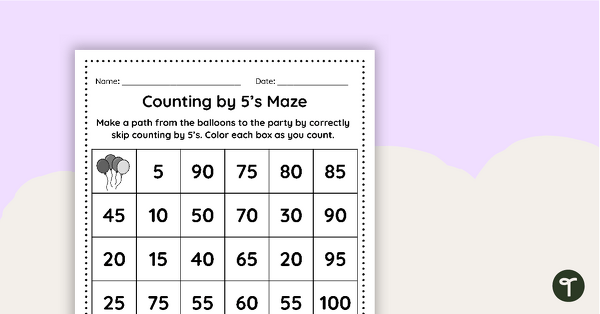
Counting by 5's Maze
Get to the party by skip counting to 100 with our counting by 5’s worksheet.
- Plus Plan

Mini-Mystery – Who Pushed Humpty Dumpty?
A fun, logic-based activity where students read clues to solve the mystery.
- Plus Plan
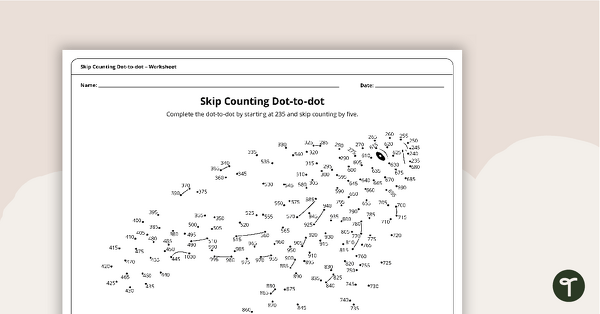
Complex Dot-to-dot – Skip Counting by Fives (Turtle) – Worksheet
A complex dot-to-dot where students demonstrate skip counting by fives.
- Plus Plan
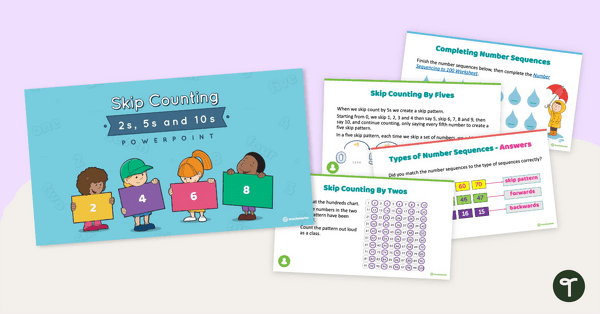
Skip Counting by 2s, 5s, and 10s PowerPoint
A 28-page editable PowerPoint to use in the classroom when introducing skip counting by 2s, 5s, and 10s.
- Plus Plan
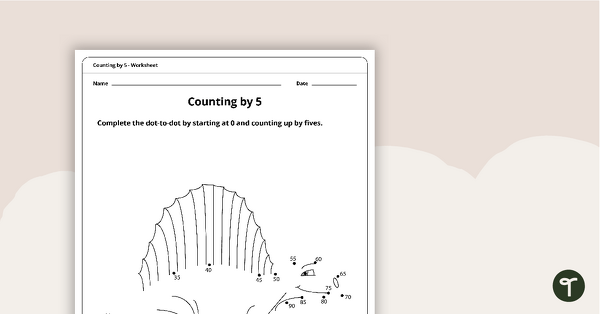
Dot-to-Dot Drawing - Counting by 5 - Dinosaur
A dot-to-dot worksheet to practice counting by 5’s to 170.
- Plus Plan
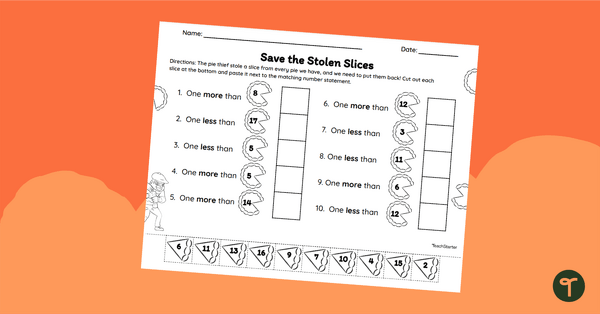
One More, One Less - Thanksgiving Math Worksheet
Help your students practice finding one more and one less than a number with a printable Thanksgiving One More, One Less worksheet.
- Plus Plan
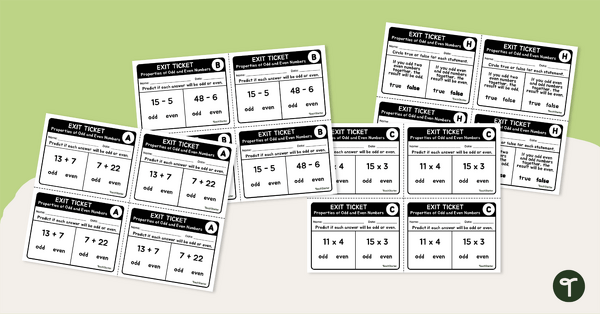
Properties of Odd and Even Numbers Exit Tickets
Check for student understanding with these Odd and Even Properties exit tickets for the classroom.
- Free Plan
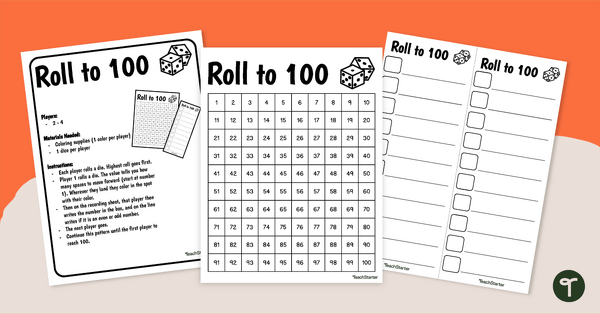
Roll to 100 Odd and Even Game
Create a fun math station with this roll to 100 game where students show their knowledge of odd and even numbers up to 100.
- Plus Plan
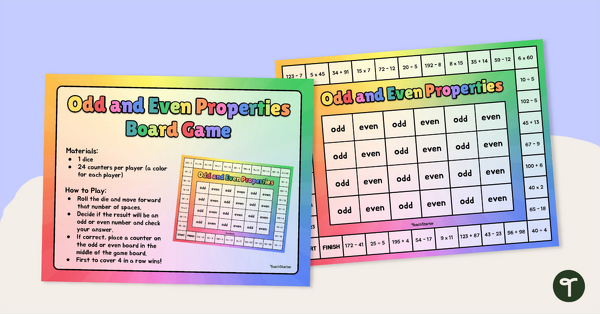
Odd and Even Properties Board Game
Help children practice identifying odd and even results of sums with this fun board game.
- Plus Plan
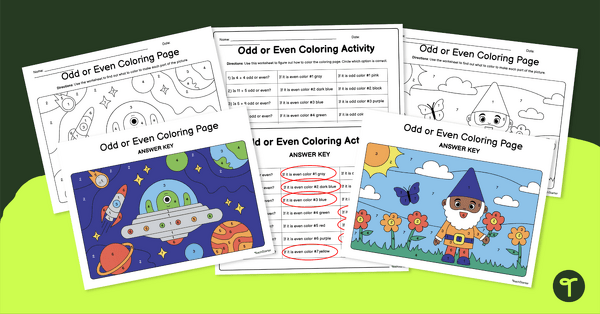
Odd and Even Color-by-Number Worksheets
Practice identifying if the sum of two numbers is odd and even with this fun set of color-by-number worksheets.
- Plus Plan
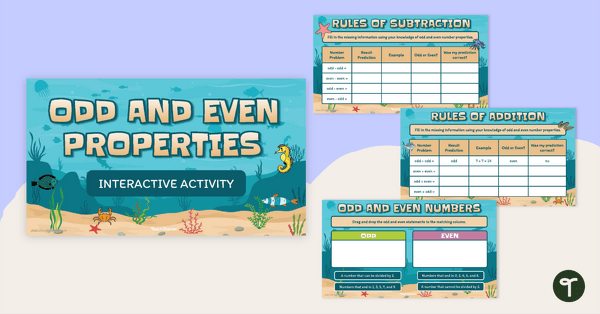
Odd and Even Properties Interactive Activity
Engage students in odd and even numbers with this interactive activity.
- Plus Plan

Odd and Even Maze Worksheets
Explore odd and even numbers with your students with these fun maze activities.
- Number Patterns Worksheets
- Number Patterns Games
- Number Patterns Posters
- Number Patterns Templates
- Number Patterns for Pre-K
- Number Patterns for Kindergarten
- Number Patterns for 1st Grade
- Number Patterns for 2nd Grade
- Number Patterns for 3rd Grade
- Number Patterns for 4th Grade
- Number Patterns for 5th Grade
- Number Patterns for 6th Grade